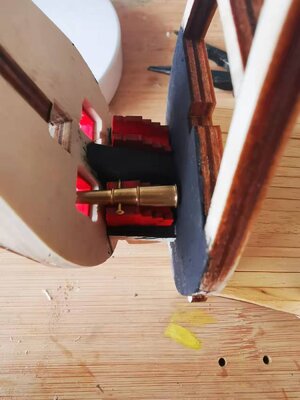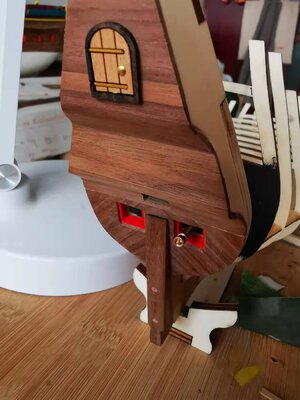When
@pietsan Piet and I discussed the fairing of the hull, he advised that I take a good look at his "tutorial" on fairing a hull while he was building the sloop of the Bounty. So, just as a starting point, let me show you some pictures of his finished sloop. (All the pictures in this posting are courtesy of Piet.
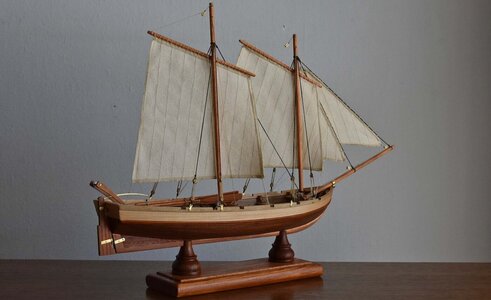

So with that as an example of the finished product, I listened to GOOD advice.
Piet's Advice on Fairing a Hull:
It goes without saying that one of the main pre-requisites for a good planking job is the fairing of the hull. Not only will it ensure a smooth line of hull planking without bumps, kinks or indentations, but it will also ensure the maximum surface for the glue to adhere to. Successful fairing of the hull serves a dual purpose. It will make the actual planking process a lot easier and will aid greatly to the radiance that the model exudes in the end.
To most modelers, fairing means grabbing a sanding block and merrily (or not so merrily) sanding away at the bulkheads from bow to stern according to an imaginary visual line. No doubt this is better than no fairing at all, but at the same time, this is not really what we want to be doing. Ideally, we should first determine where and how much and at what angle we need to sand. That will ensure that we do not sand too little- and more importantly - that we do not remove too much material from the bulkheads.
Before you start the sanding process pre-bend a strake (just as you would do if you were planking the hull already) to use as a guide.
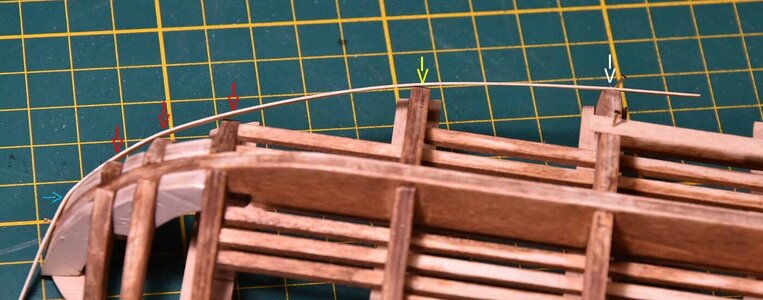
Here you can see that the pre-bent strake can be pinned to the bow and then held against the bulkheads to examine the contact areas between the plank and the individual bulkheads. The white arrow indicates that the plank is in contact with the full width of the bulkhead – in principle thus, no material needs to be sanded away here. I say in principle, because the situation might change after the other bulkheads have been sanded.
The yellow arrow indicates a slight misalignment which means that only little material needs to be removed towards the bow. The situation changes at the three red arrows where the misalignment angle is considerably bigger, thus indicating that much more material needs to be removed – again towards the bow. The blue arrow shows a severe kink in our strake. This is caused by a filler block at the bow which has not yet been sanded to shape.
We can, of course not only check for alignment in one particular place and then think that if if that looks good, we are finished. Multiple checks have to be carried out because as we get closer to the keel for instance, the angles start getting smaller and it is not necessary to remove as much material as higher up on the hull.
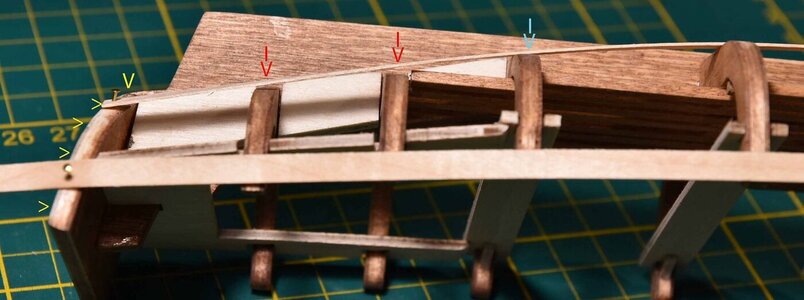
At the stern adjustments are also generally smaller, but we still need to check. On the picture above, the blue arrow indicates a very slight angle, so very little fairing is required there. The red arrows however, show a much greater angle and obviously we need to address that. Pay attention though that the problem does not lie with the two bulkheads indicated by the two red arrows, but with the stern frame itself. Because the stern frame is mounted square to the keel, it has to be faired in the same curvature as the rest of the hull line. That will automatically bring the plank into full contact with the frames indicated by the red arrows.

Here is another example (this time viewed directly from above) where the gap indicated by the blue arrows is caused by the stern frame. The stern frame, in this instance needs to be faired until the gap at the blue arrows disappears. The frame demarcated by the white arrow, shows that very little material needs to be removed there.
Our ideal scenario is thus depicted by the last three pictures. Here we can see that our hull planks are in full contact with all the frames without any bumps, indentations/ hollows or gaps.
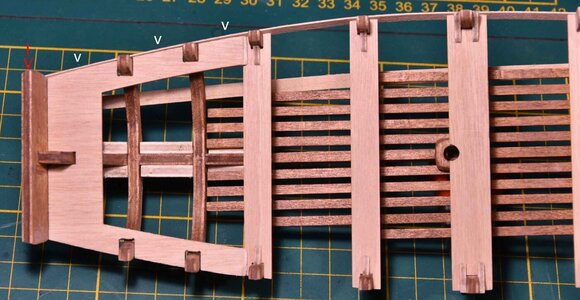
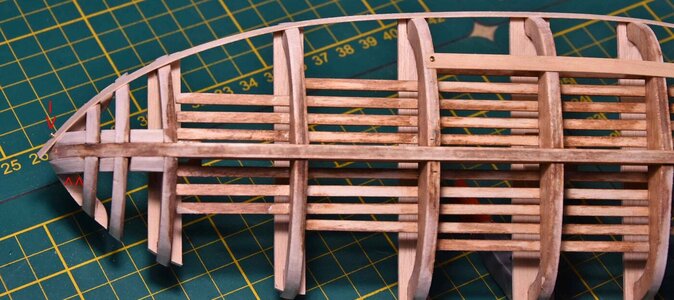
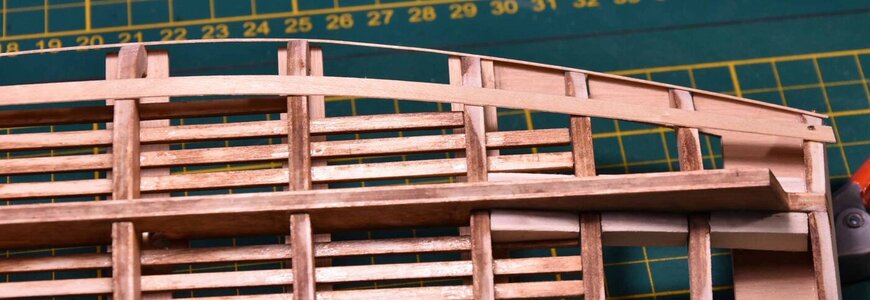
Taking the time to fair the hull properly, may be time consuming, but in the end. you will reap the benefits. Not only will your planking be much easier accomplished, but the finished product will be something that you can be proud of.
Thank you very much Piet.









 sorry I playing catch up here Heinrich
sorry I playing catch up here Heinrich

